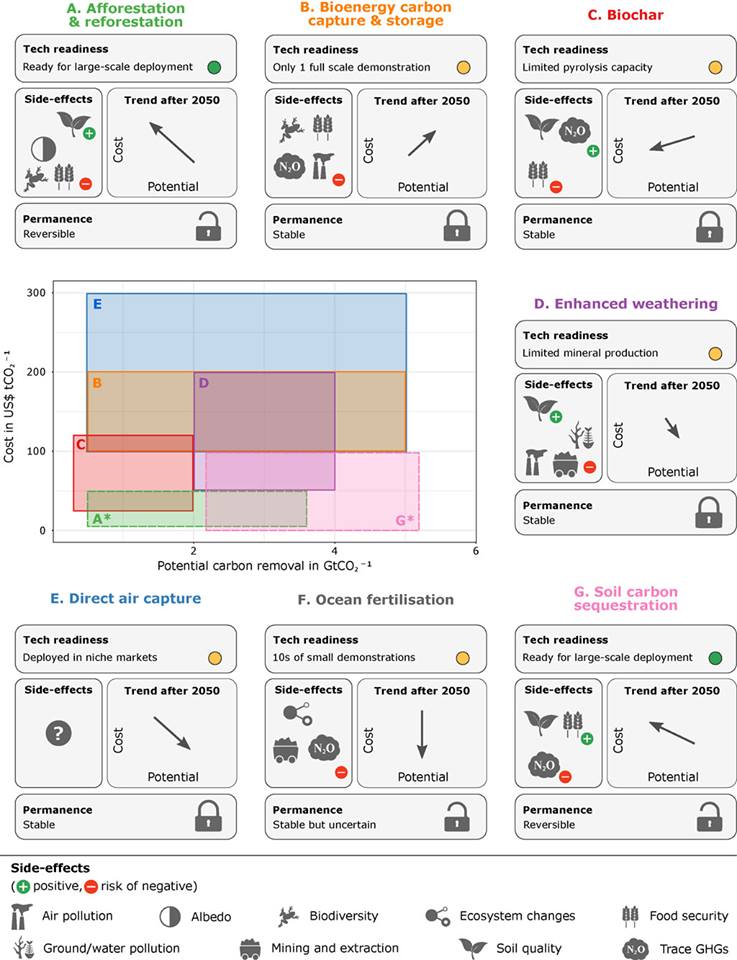I was recently reading an article in Carbon Brief about Negative Emissions Technologies, and it struck me that the article would be very difficult for the average person to read, in part because of the number of acronyms and terms used in the article that will be unfamiliar to people who aren’t spending a fair amount of time keeping up with the science and policy of climate change.
So, here’s a short list of terms from the article. Oh, and by the way, as difficult as all these terms are, they are the ones that describe whether or not our children and grandchildren have a viable future on this planet. So, it’s a good idea to get familiar with them.
NETs: Negative Emissions Technologies – technology that can remove CO2 from the atmosphere and store it long term via a variety of means.
CDR: Carbon Dioxide Removal – by NETs or other means, including BECCS.
BECCS: Bio-energy with carbon capture and storage – removing CO2 from the atmosphere via growing biomass (crops, trees, etc.), burning that biomass in power plants, capturing the CO2 and storing it long term.
DACCS: Direct air capture and storage – pulling CO2 directly from the atmosphere and storing it, rather than, say, burning biomass and capturing the CO2 from the burning process.
SRM: Solar Radiation Management – Putting something in the atmosphere to reflect sunlight, e.g. sulfur dioxide, tiny mirrors, etc.
IPCC: Intergovernmental Panel on Climate Change – the organization that publishes climate assessment reports every 5-7 years, which in turn guide policy making.
NDCs: Nationally Determined Contributions – Greenhouse gas emissions cuts pledged by countries participating in the Paris climate accord.
SSPs: Shared Socioeconomic Pathways – scenarios that describe how global society, demographics and economics might change in the future and how that may impact emissions.
And last but definitely not least:
CO2: Carbon Dioxide, of course – the greenhouse gas (GHG) we are emitting in large quantities.
The image on this post is an image from the article showing the features of each type of Negative Emissions Technology, and was made by the authors of the article (Minx et al).
P.S. While you’re reading about Negative Emissions Technologies, you should read this too.



Recent Comments